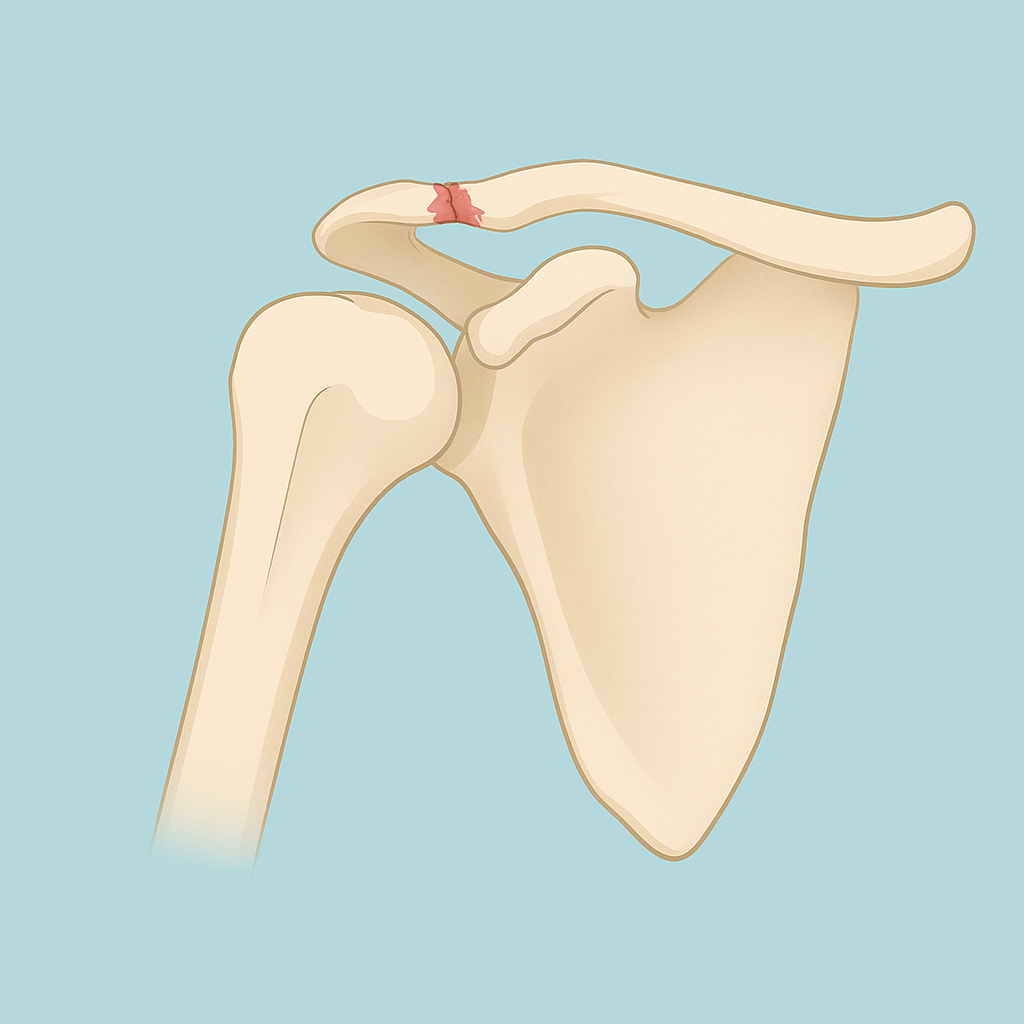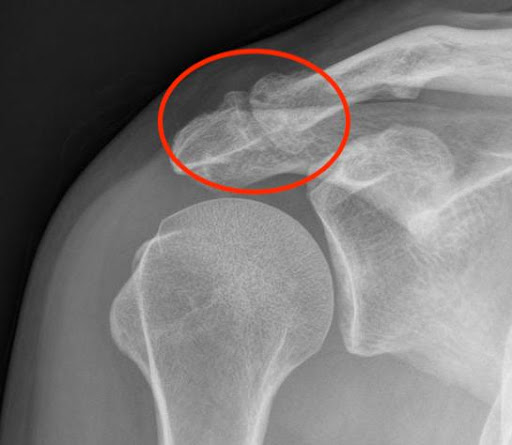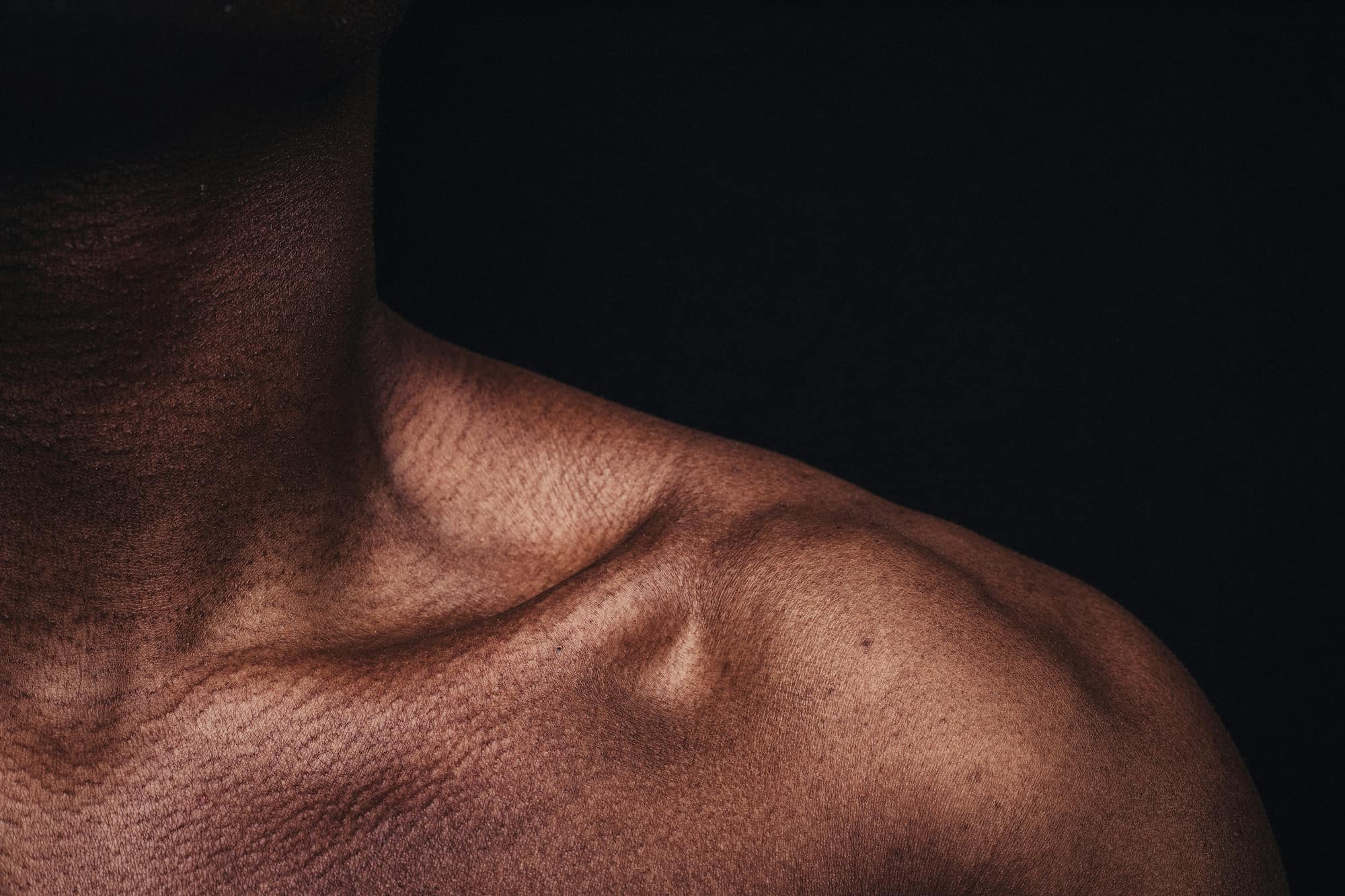ACJ arthritis, or acromioclavicular joint arthritis, is a type of arthritis that affects the joint where the collarbone (clavicle) meets the shoulder blade (acromion) at the top of the shoulder. This joint, known as the AC joint or ACJ, can experience wear and tear over time, leading to pain and inflammation.
What causes ACJ arthritis?
ACJ arthritis develops when the cartilage in the AC joint wears down, causing the bones to rub against each other. This process can occur due to:
- The AC joint often degenerates with age, even in the absence of any specific injury.
- High-impact activities or repeated overhead movements (e.g. weightlifting) can stress the AC joint, leading to joint degeneration.
- Past injuries to the shoulder area, (fractures/dislocations) can increase the risk of developing ACJ arthritis.
- Diseases like rheumatoid arthritis can also contribute to the degeneration of the AC joint.

What symptoms would I notice?
- The most common symptom is localised pain at the top of the shoulder. The pain is often aggravated by overhead movements or reaching across the body.
- The AC joint may feel sore when touched, particularly near the shoulder tip.
- Activities that stress the shoulder joint, such as lifting weights (e.g., bench press) or sleeping on the affected shoulder, can increase discomfort.
How is ACJ arthritis diagnosed?
Diagnosing ACJ arthritis starts with your GP, who will evaluate the pain location, check for tenderness at the AC joint, and assess your shoulder’s range of motion.
X-rays are used to assess the joint space and detect any signs of joint degeneration, such as bone spurs or increased bone density around the AC joint. In some cases, an MRI may be ordered to examine soft tissue structures and joint condition more closely, particularly if other shoulder issues are suspected.

Treatment options
Most cases of ACJ arthritis are managed without surgery, focusing on pain relief and joint preservation. Surgery may be considered if non-operative treatments fail to provide sufficient relief.
Non-operative options:
- Avoiding activities that aggravate the AC joint, such as heavy lifting or overhead movements, can help reduce symptoms.
- Physiotherapy can strengthen surrounding muscles to support the shoulder and relieve joint stress.
- An injection into the AC joint can help reduce inflammation and provide temporary relief. While relief may be short-term, injections can confirm the diagnosis if they significantly reduce pain and can sometimes be enough to improve things long term.
Operative treatment – Distal Clavicle Excision
This procedure involves removing the end portion of the collarbone (about 8mm) to create space in the AC joint, reducing bone-on-bone friction. It can be performed as either an open or arthroscopic (keyhole) surgery. The procedure is typically quick, taking less than an hour, and is done as a day surgery. During surgery, care is taken to preserve surrounding ligaments to maintain joint stability. Click below to read more about the surgical procedure.
Surgically managing ACJ arthritis with Dr Lambers
For patients considering surgery, Dr Lambers will work with you to create a surgery and rehabilitation plan that includes range-of-motion exercises and pain management to promote recovery.

